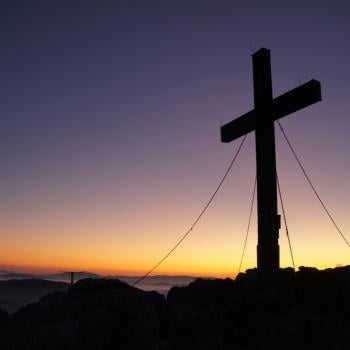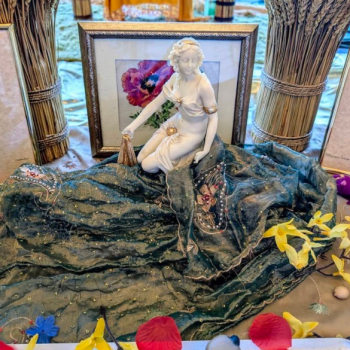The Qur'an, along with later eschatological writings, describes in great detail the day of judgment as one in which even the most pious will be afraid. The resurrection itself is hardly a time of gratitude on the parts of those to whom life is given again. Medieval manuals delight in elaborate portrayals of individuals awaiting the judgment in terror, standing in sweat up to their ankles, their waists, their shoulders. It is at this time that souls experience most graphically the results of their deeds and misdeeds on earth.
The Qur'an makes it clear that each individual alone is responsible for his or her past deeds and that one will have to encounter those deeds and their consequences in very graphic form on the day of judgment. On that day the record will be revealed to each person individually, the result of the reckoning obviously predetermined by one's being ordered to take the book in either the right or the left hand. For the heedless, this revealing of the record will come as a tremendous shock.
References in the Qur'an and the elaborations of tradition have added several other events to the picture of the last day. The Qur'an mentions the mizan or balance, which in the singular means the principle of justice. In the plural it refers to the scales by which individual deeds are weighed. The image of a specific weighing has thus been adopted as one of the modalities of judgment.
Another such modality is the bridge, adopted into Islamic tradition to signify the span over Gehenna, the top layer of the Fire. Both the saved and the condemned must pass over the bridge, although the judgment process actually has been completed at the point at which the bridge is mentioned in most narratives. Those judged guilty of sin but still considered to be believers fall from the bridge into the Fire, but only for a limited period of purgation. Those who have neither faith nor good deeds to their credit, however, find that the bridge has become sharper than a sword and thinner than a hair, and that their fall into the Fire of everlasting punishment is inescapable. The faithful, on the contrary, move easily and swiftly across a broad bridge, led by the Prophet himself.
The Garden or the Fire
The Qur'an leaves no doubt that the alternatives for each individual at the day of judgment are two: the bliss of the Garden or the torment of the Fire. Because of the full and graphic descriptions of the Garden and the Fire in the Qur'an, Islam has often been accused of a very materialistic conception of the afterlife. As with the modalities at the hour of judgment, the Muslim community has expressed a variety of interpretations about whether or not the rewards and punishments of the life to come are to be understood in their most literal sense. While the dominant understanding has been an affirmation of the reality of physical torment and pleasure, proponents of this view generally have not insisted that the realities of the next world will be identical with those of this world. While clearly physical, recompense in the ultimate sense is generally understood to have a reality beyond what we are able to comprehend.
The Qur'an itself does not offer a detailed plan of the realms of the Fire or the Garden. Gehenna is described as having seven gates, leading to the popular notion that the Fire consists of seven descending layers of increasing torment. An elaborate structure of relative punishments came to be worked out around the seven layers of Fire, and later tradition supplied each of the gates with guardians who torture the damned. At the bottom of the lowest level grows the dreaded Zaqqum tree with the heads of demons for flowers. The Qur'an offers a number of specific indications of the tortures of the Fire: its flames crackle and roar; it has fierce boiling waters, scorching wind, and black smoke; the people of the Fire are sighing, wailing, and wretched.
In some ways the divisions of the Fire directly parallel those of the Garden, although the Garden is sometimes said to have eight rather than seven layers. The opposite of the Zaqqum tree is the Lote tree at the top of paradise. Garden is the general name for paradise, although the Qur'anic descriptions are of gardens in the plural. The most spacious and highest part of the Garden is directly under the throne of God, from which the four rivers of paradise flow.
Qur'anic references to the joys awaiting the dwellers in the Garden are sufficiently rich that tradition has done little but amplify and elaborate on them. The faithful are content, peaceful, and secure; they enjoy gentle speech, pleasant shade, and fruits neither forbidden nor out of reach, as well as cool drink and meat as they desire; they sit on couches facing each other, wearing green and gold robes of finest silk. One of the joys afforded to the inhabitants of the Garden is the companionship of young virgins with eyes like guarded pearls. While the Qur'anic descriptions do not mention God, the clear understanding of Muslims is that the faithful will gaze upon his face, a joy that the inhabitants of the Fire are denied.





